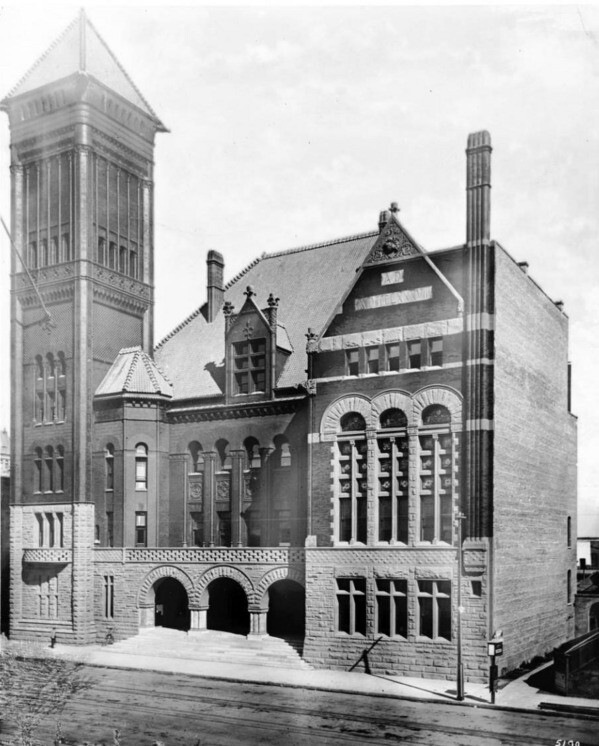How N.Y.C.'s Broadway Gave Its Name to an L.A. Street

Why does downtown Los Angeles' grid include a street with such a distinctively New York name? Broadway may be one of L.A.'s oldest streets -- laid out by surveyor Edward O. C. Ord in 1849 -- but until 1890, Angelenos knew it only as Fort Street.
Problems with pronunciation provided the impetus for the name change. By the late 1880s, Los Angeles was home to a growing, influential minority of German immigrants -- a group whose native tongue lacked the "th" sound used in so many English words. Confusion reigned as Angelenos with German accents pronounced two intersecting streets, Fort and Fourth, identically. Even when pronounced by native English speakers, the difference was hard to discern over the city's primitive telephone lines.
Fort Street was then transitioning from residential street into retail district, and such confusion threatened to retard its development. In early 1890, a group of residents and merchants along Fort Street -- led by printer Fred Lind Alles, originally of Pittsburgh, Pennsylvania but then a resident of Fort and Fourth -- petitioned the city for a name change.


Sentiment almost sank the proposition; Fort Street's name referred to Fort Moore, a hilltop battlement built during the Mexican-American War that historic-minded Angelenos (including the leadership of the Los Angeles Times) didn't want to forget.
But when a consensus eventually formed to rename Fort Street, the question became: to what? Los Angeles needed a name that would project its hopes for the future of Fort Street, which was only then emerging as a retail corridor. One suggestion was Market Street. But as Alles recalled decades later, "I felt we shouldn't copy San Francisco."
Turning away from its northern rival, Alles and his allies instead looked to the east. New York was then, as now, the nation's most populous city. But in 1890 its population of 1.5 million dwarfed Los Angeles' 50,000. For an upstart city like Los Angeles, which had just emerged from a turbulent real estate boom and bust cycle, there was no shame in purloining one of New York's most distinctive street names.
Broadway -- the Anglicized version of a Dutch name (Brede Weg) for the road that meanders through Manhattan and the Bronx, tracing an old Indian footpath -- seemed a natural choice. Just two years earlier, the city had widened Fort Street's sidewalks by five feet on each side, creating a broad, 85-foot avenue. (Many other American cities also borrowed the name -- including San Francisco.)
On Feb. 17, 1890, the matter came before the city council, which gave its unanimous approval. Two days later, when Mayor Henry Hazard signed the ordinance, Fort Street passed into historical oblivion, and Los Angeles began to sound just a little more like New York.
Special thanks to fellow KCET.org contributor Ed Fuentes for suggesting this topic.








Composite photo of present-day Broadway in New York and Los Angeles that appears when sharing this photo on social media by Flickr users Jacob-uptown (left) and Kent Kanouse (right). Used under the same Creative Commons License.


